Kona Gateway Cellular Backhaul FAQ
#1 How do I install a SIM into my Kona Gateway?
-
Kona Gateways labelled Gen1 support 3FF SIM cards only.
-
Kona Gateways labelled Gen1.5, Gen2, and Kona Enterprise support 4FF SIM cards only.
-
Kona Mega Gen1 supports 3FF SIM cards only, whereas the Mega Gen1.5 supports two 4FF SIM cards only. However, it is not possible for the customer to install SIM cards on the Kona Mega, as it requires you to open the gateway. Opening the gateway in any case voids any existing warranty. To install a SIM, please contact your sales representative to arrange SIM installation for your Kona Megas.
-
Whenever a SIM is installed, please reboot the gateway.
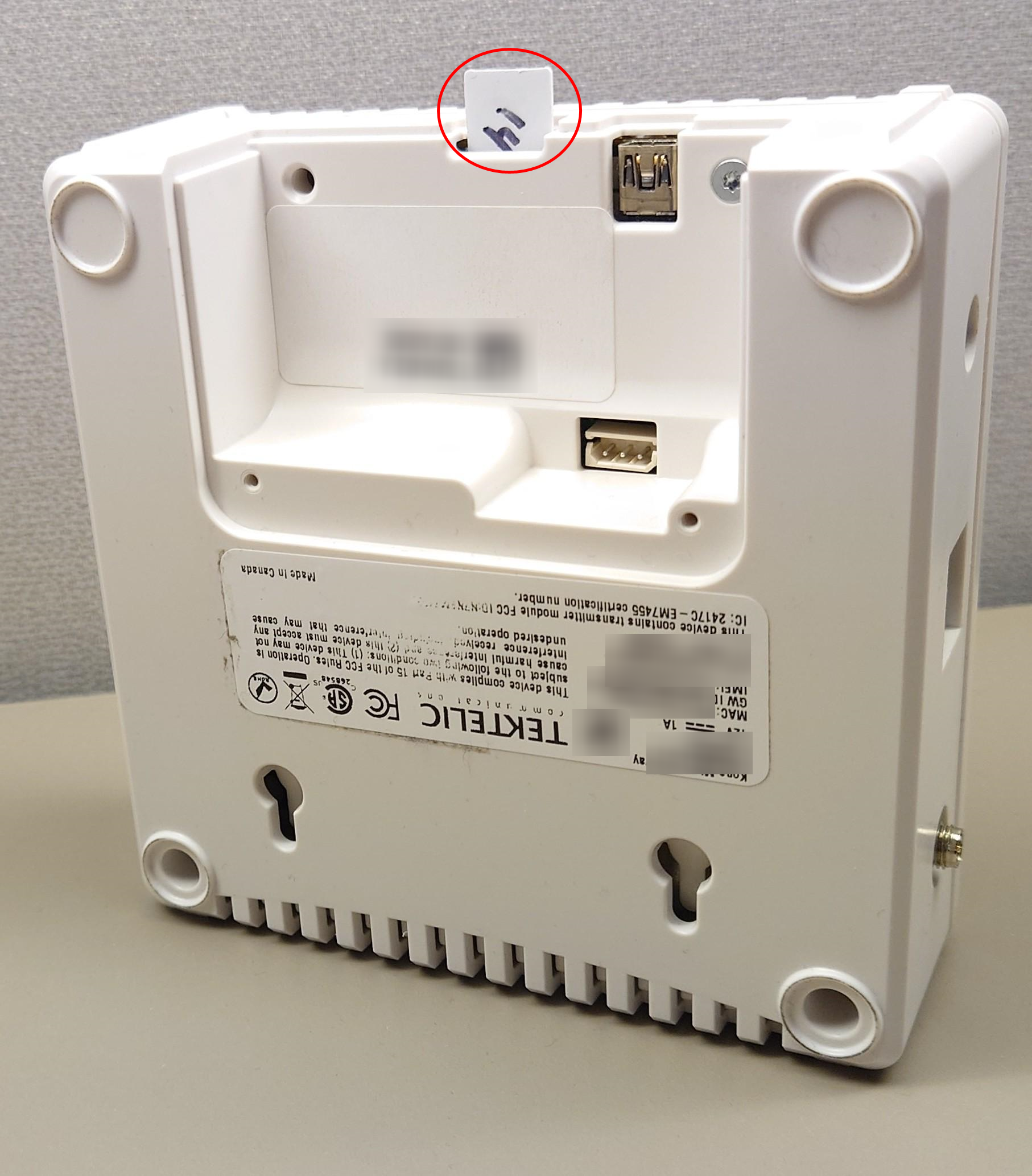
Kona Micro Gen2
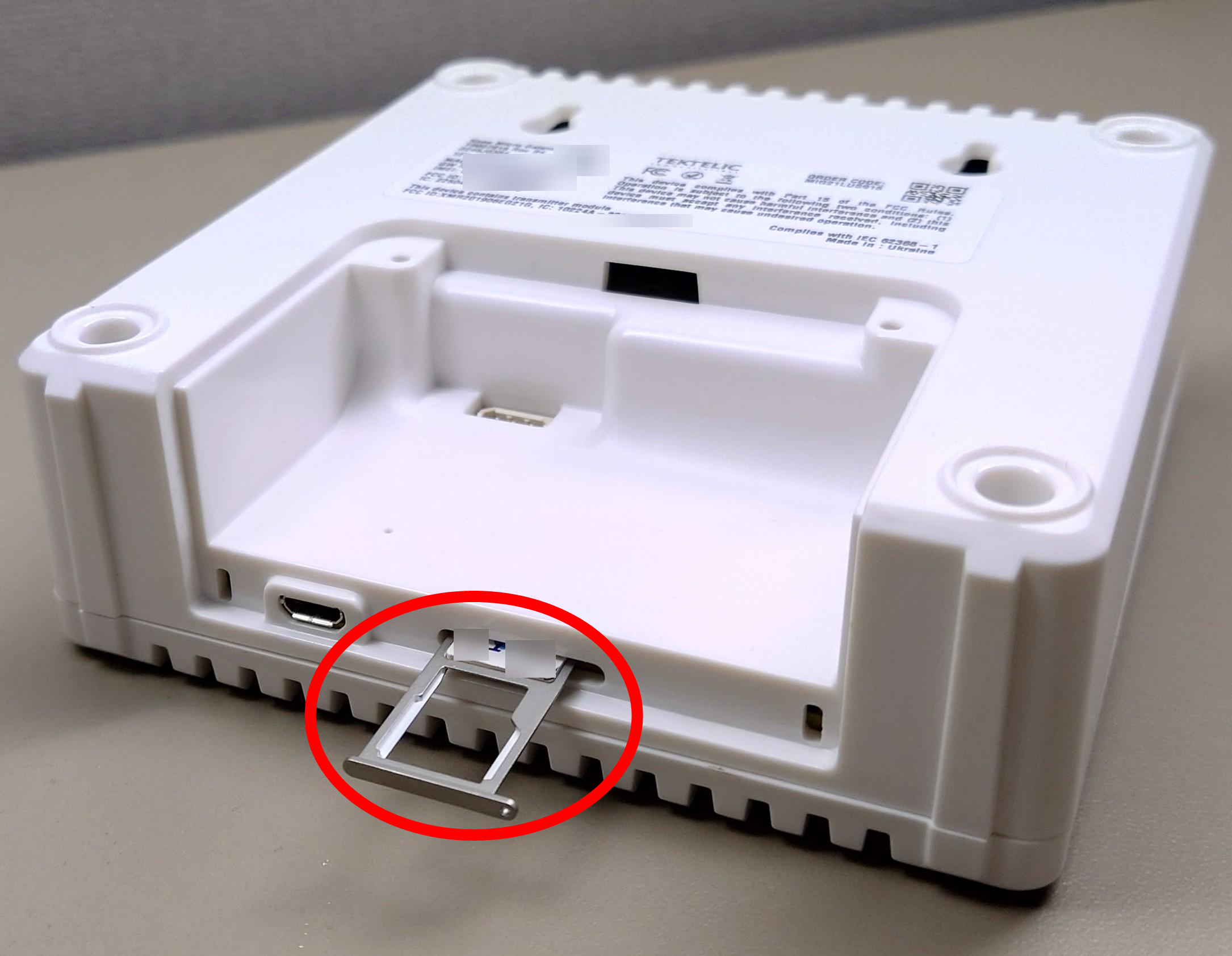
 When inserting the SIM tray, flip the gateway on its back as pictured and place the SIM onto the tray with the conductive part facing downwards towards the front logo of the gateway. Then, insert the tray into the gateway.
When inserting the SIM tray, flip the gateway on its back as pictured and place the SIM onto the tray with the conductive part facing downwards towards the front logo of the gateway. Then, insert the tray into the gateway.Kona Macro Gen1
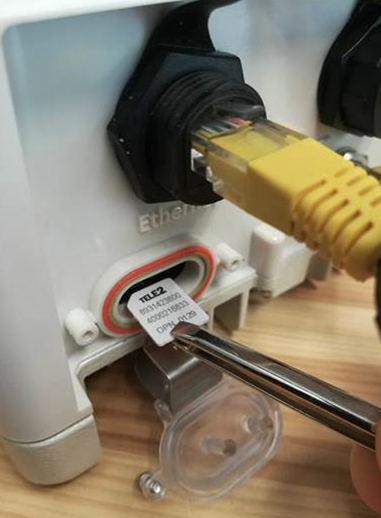
 When inserting the SIM, point the conductive part towards the metal bottom of the gateway.
When inserting the SIM, point the conductive part towards the metal bottom of the gateway.Kona Macro Gen1.5

Kona Enterprise
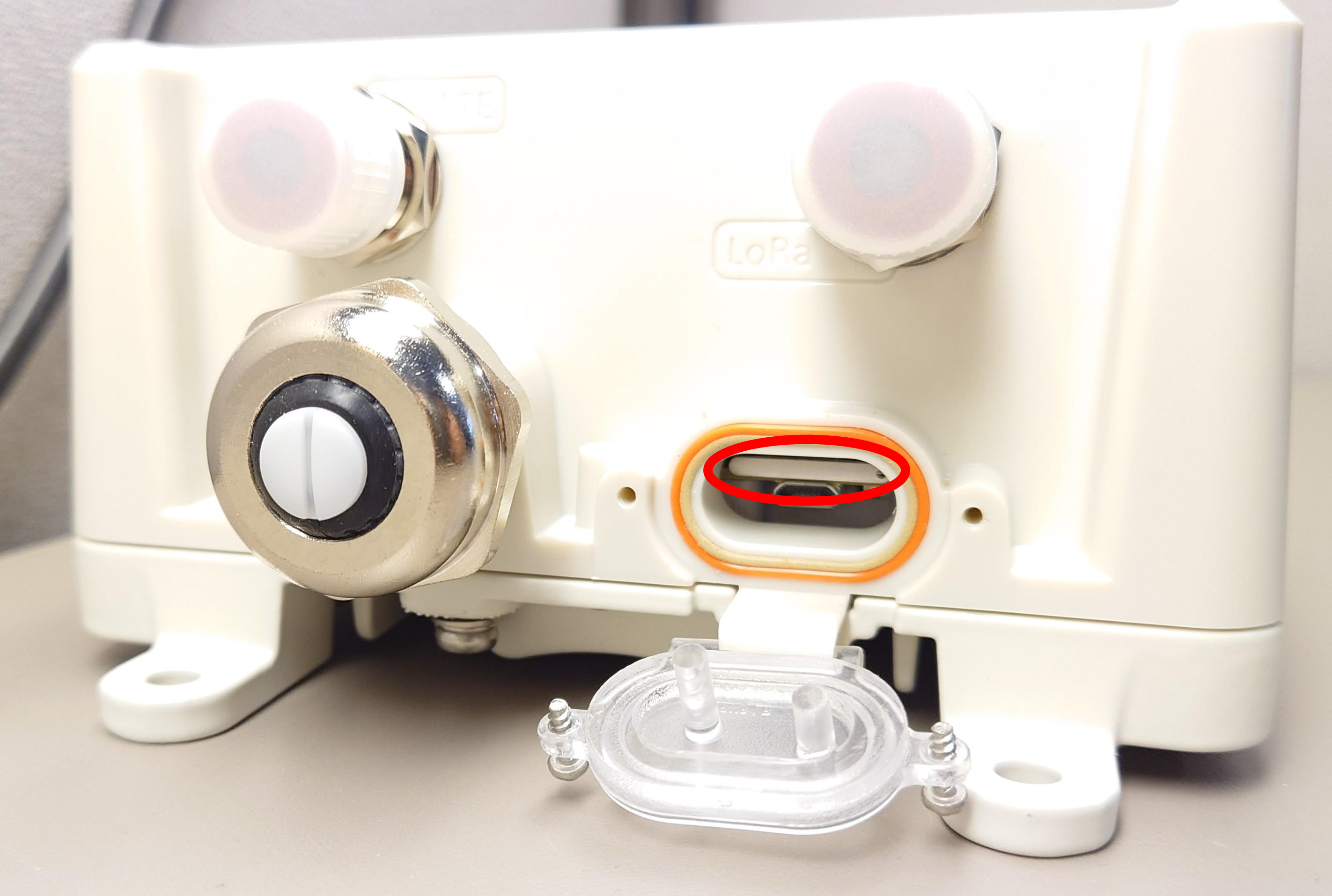
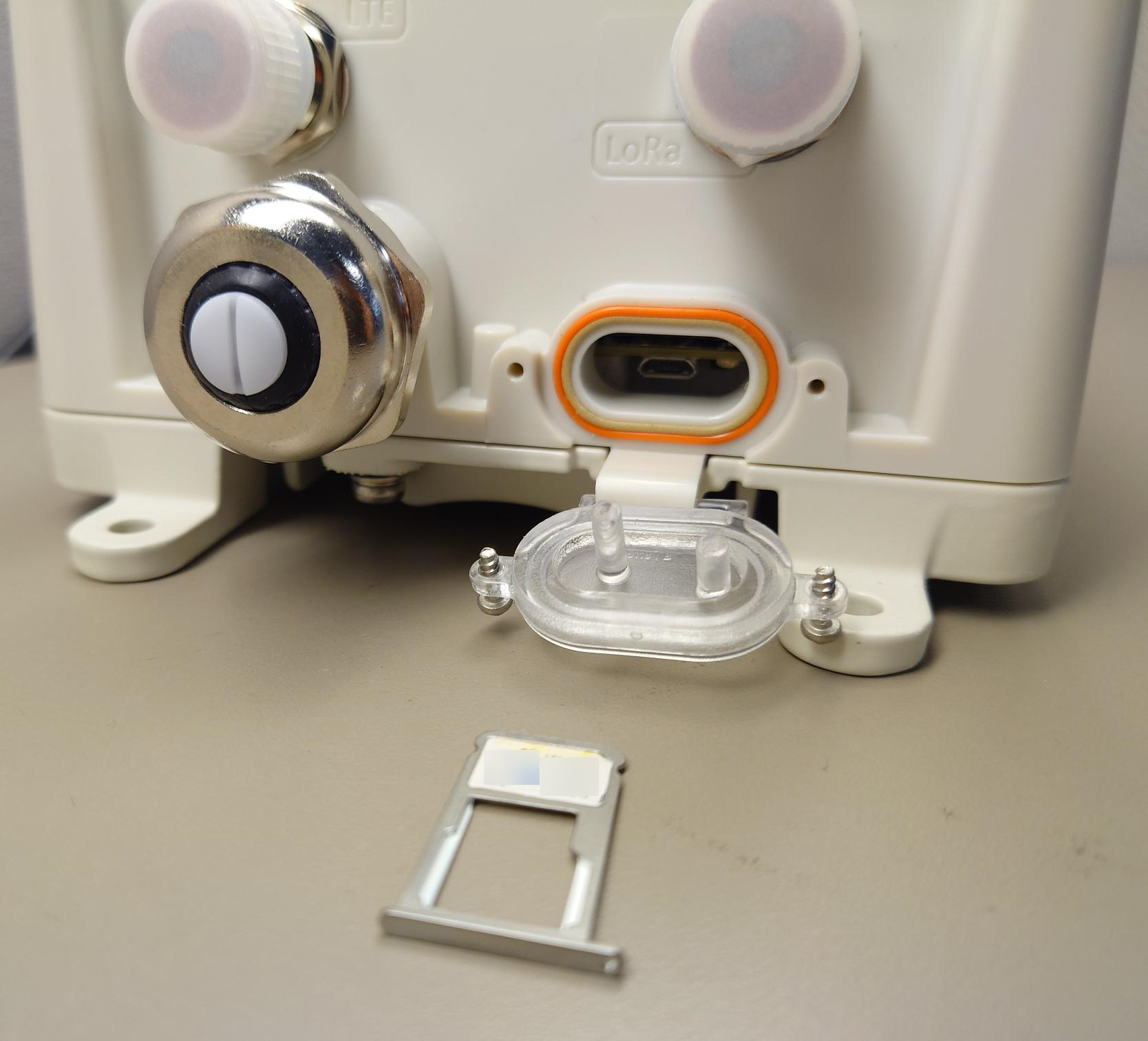
#2 I installed a SIM but it's not being detected?
- Using SSH to connect to the gateway and the command konaLTEmodem.py -c 'at+ccid' returns ERROR: SIM FAILURE
- Using KonaFT to connect to the gateway and the Wireless Modem tab has SIM STATUS as ABSENT.

#3 How do I set an APN on the gateway?
KonaFT
- Double click the empty space under APN to edit the APN for the first profile. Once finished, select "Update Selected" beside "Set Selected as Active".
- Use the box in the top left to insert a new APN. You only need to enter an APN name. Once finalized, click Insert New Profile.
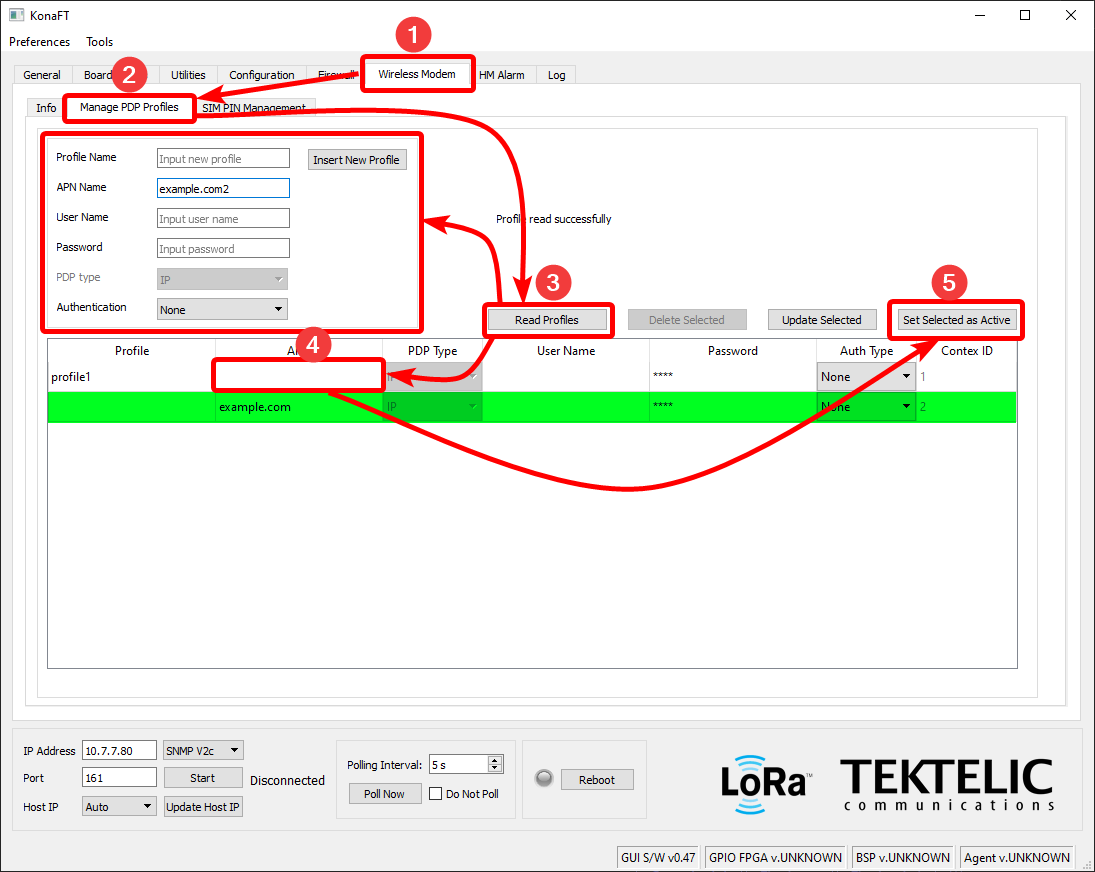
SSH (Advanced users only)
- To insert an APN please enter the following command: konaLTEmodem.py -c 'at+cgdcont=1,"IP","<APN_OF_SIM_U_R_USING>","0.0.0.0",0,0'
-
The "1" in the command indicates the profile index. To set the 2nd profile, replace it with a 2.
-
To remove an APN, simply re-enter the command, but leave the APN empty like so: konaLTEmodem.py -c 'at+cgdcont=1,"IP","","0.0.0.0",0,0'
-
To check the list of APN profiles on the gateway, please enter the following command: konaLTEmodem.py -c 'at+cgdcont?';
#4 How do the fallback mechanisms work for cellular backhaul?
Kona Gateway Network Monitoring FAQ
#5 Do Kona Gateways require any extra configuration for using Verizon/AT&T SIM cards for cellular backhaul?
- If a Private APN is set:
- The gateway modem does NOT require any additional firmware installation.
- If a Public APN is set (i.e. VZWINTERNET):
- Verizon specific modem firmware will need to be installed.
- Raise a ticket on the support portal for additional instructions to do so.
#6 How can I tell the signal strength of my cellular modem?
- Through KonaFT
- Through TEKTELIC CORE Network Server / OA&M
- Through SSH (ADVANCED USERS ONLY)
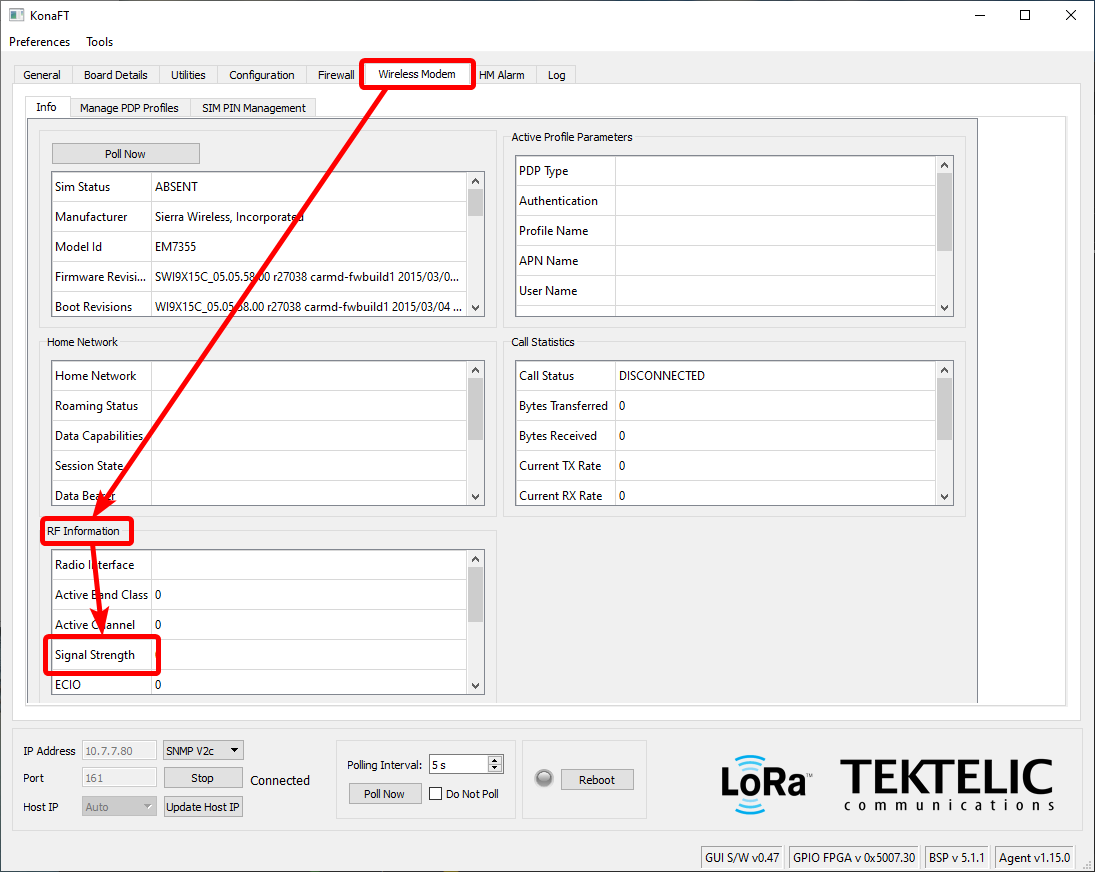
TEKTELIC CORE Network Server / OA&M
- On TEKTELIC CORE Network Server, simply select Gateways from the left navigation page and then click on your desired gateway.
- On TEKTELIC OA&M, select Gateway Groups from the left navigation page. From there, select your Gateway Group, then select Manage Gateways. Then select your desired gateway.
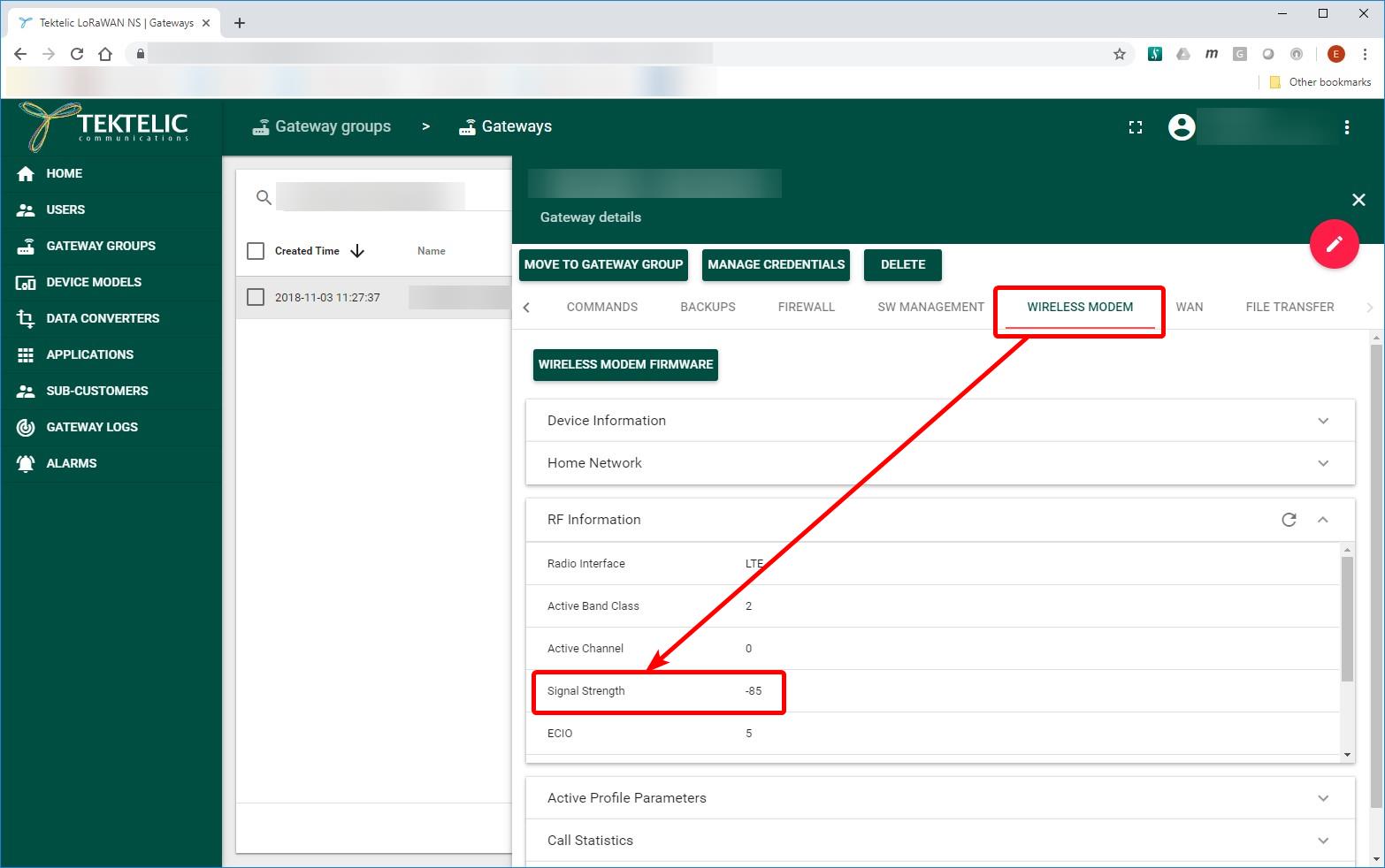
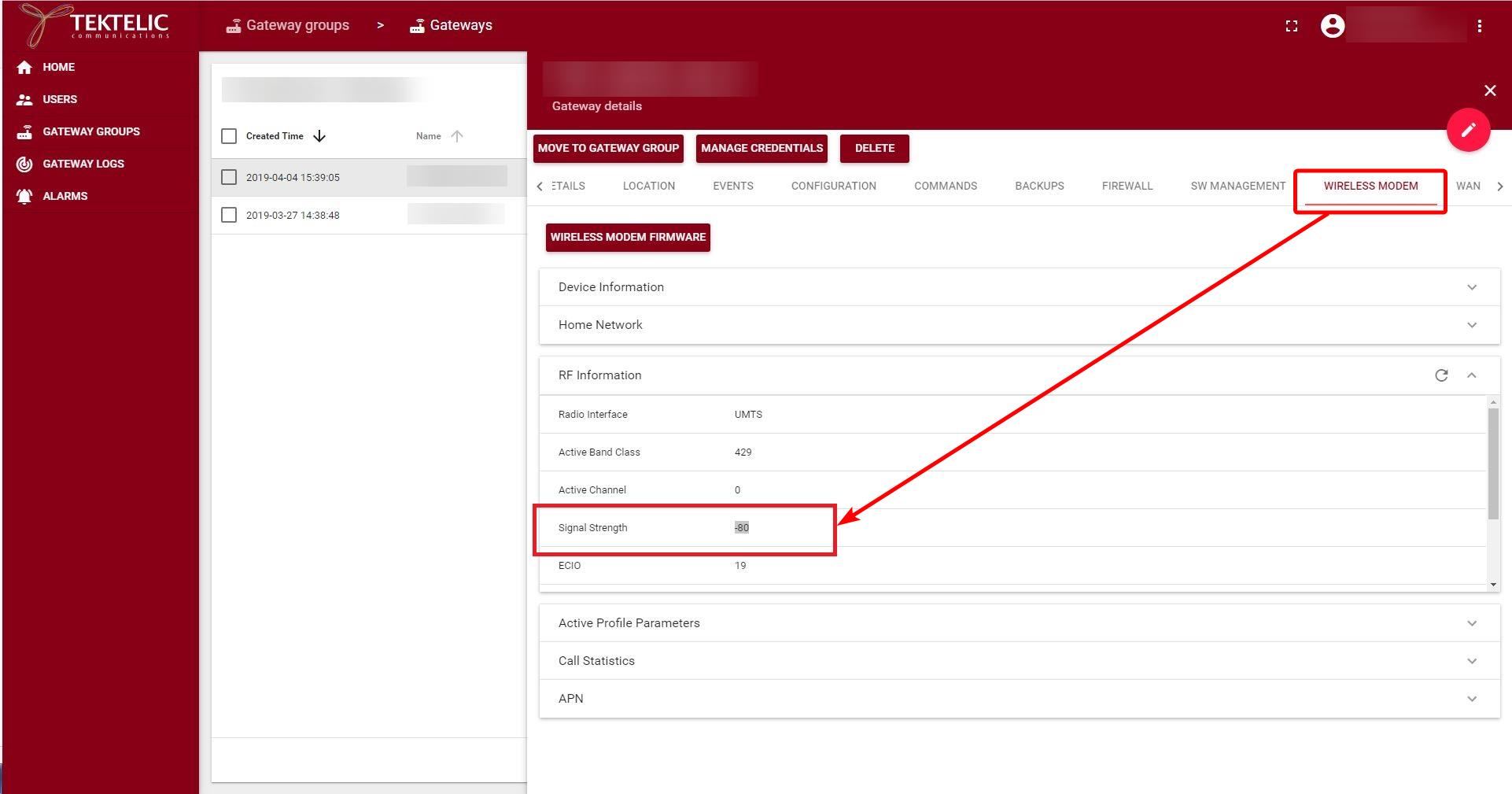
 The gateway IP can be found by matching the IP to the gateway's MAC address. All Kona gateways will have a MAC address beginning with 64:7F:DA
The gateway IP can be found by matching the IP to the gateway's MAC address. All Kona gateways will have a MAC address beginning with 64:7F:DA-
root@kona-micro:~# konaLTEmodem.py -c 'at!gstatus?'; at!gstatus? !GSTATUS: Current Time: 2240 Temperature: 45 Reset Counter: 31 Mode: ONLINE System mode: LTE PS state: Attached LTE band: B7 LTE bw: 10 MHz LTE Rx chan: 2800 LTE Tx chan: 20800 LTE CA state: NOT ASSIGNED EMM state: Registered Normal Service RRC state: RRC Connected IMS reg state: No Srv PCC RxM RSSI: -84 RSRP (dBm): -109 PCC RxD RSSI: -82 RSRP (dBm): -105 Tx Power: -- TAC: DACF (56015) RSRQ (dB): -7.0 Cell ID: 087A035D (142213981) SINR (dB): 13.6 OK
#7 How do I reduce Cellular Bandwidth?
There are 3 main ways of reducing cellular bandwidth. This section will assume that you are an advanced user capable of accessing and navigating the gateway through command line and SSH.
-
Modifying or removing the MQTT Bridge.
-
Disabling TCS on Kona gateways.
-
Reducing ping test frequency on Network Monitor.
MQTT Bridge
This section will cover two scenarios:
-
You are NOT USING the MQTT Bridge and have no plans on using TEKTELIC CORE/OAM servers. In this case, the MQTT Bridge can safely be removed.
-
You are USING the MQTT Bridge to connect to TEKTELIC CORE/OAM. In this case, the MQTT Bridge will need to be modified.
Removing MQTT Bridge
To remove the MQTT bridge, simply SSH into the gateway and enter the following command: opkg remove mqtt-bridge
Modifying MQTT Bridge
The MQTT Bridge regularly sends updates to TEKTELIC CORE or OAM.
-
To update the interval, download or directly modify the following file: /etc/default/tektelic-bridge.toml
-
Ensure the following line DOES NOT have a "#" in front of it and modify the value to your preference: gw_events_interval
-
Reinsert the file if you chose to download the file to edit it.
- Micro - v3.3.6 onwards
- Macro/Mega - v4.3.X onwards.
- Enterprise/Photon - all versions contains the setting.
Disabling TCS
Kona gateways contact the TEKTELIC Commissioning Server for further hands-off configuration. However, this feature has not been implemented yet.
To disable TCS, simply SSH into the gateway and enter the commands in the order:
1. touch /var/lib/tcs/commissioning_complete
2. reboot
Reducing Ping Test Frequency
Kona gateways will ping 8.8.8.8 with the frequencies:
-
Preferred interface - every 10 seconds.
-
Fallback interface - every 30 seconds.
You may edit the ping test frequencies, however this will cause the gateway to react slower to connectivity health.
To edit the frequencies, there are two methods:
-
KonaFT
-
SSH
SSH
1. SSH into the gateway.
2. Edit the following file: vi /opt/network-monitor-db/network-monitor.conf
3. Modify the following value as desired: frequency_of_fallback_interface_ping_test=XX (where XX is time in seconds)
KonaFT
- Connect to the gateway.
- In the top row of tabs, select Board Details, then in the row of tabs below, select Misc. Then select Network Monitor Configuration to modify the settings.
- Modify the below settings as required, where ## is a number in seconds.
- frequency_of_preferred_interface_ping_test=##
- frequency_of_fallback_interface_ping_test=##
- Finalize by clicking Save. If need be, click Reload to verify the changes made.

#8 Is FirstNet Network supported by the gateway?
FirstNet is a public safety broadband network in the United States, built by and for first responders that uses Band 14 spectrum (700 MHz) that is reserved for public safety.
Unfortunately, at this point in time. none of our gateway modems support the use of LTE Band 14, which is the key band used by FirstNet and as such, are not able to connect to the FirstNet network.